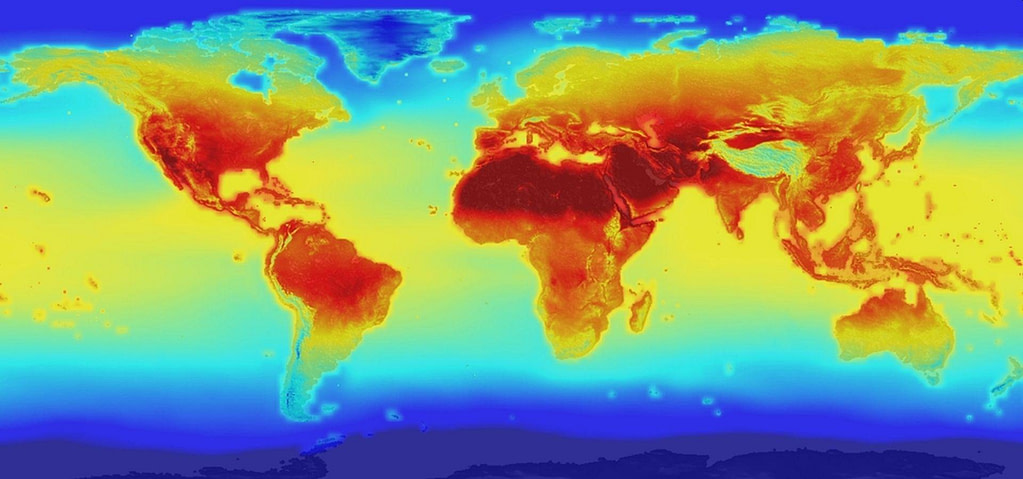This is probably the most publicised existential risk, apart from a global nuclear war. Conventional modelling of climate change induced by human activity (adding carbon dioxide to the atmosphere) has focused on the most likely outcome: global warming by up to 4C. But there is a risk that feedback loops, such as the release of methane from Arctic permafrost, could produce an increase in temperature of about 6C or more. Mass deaths through starvation and social unrest could then lead to the collapse of civilisation. The most optimistic predictions estimate that the overall existential risk from extreme climate change is about 0.01% annually, which would make it 1% over the entire century – not that much. The most realistic assessment was probably made in the Stern Report. It estimates such risk at 9.5% over this century. I have taken the median view, that the existential risk stemming from the extreme climate change over this century is about 5% but only if combined with other risks – see Progressive Risks.
Martin Rees, the former Royal Astronomer, observes that many people still hope that we can sail towards a low-carbon future without trauma and disaster. He says that politicians won’t gain much resonance by advocating a bare-bones approach that entails unwelcome lifestyle changes – especially if the benefits are far away and decades into the future. There are, however, three politically realistic measures that should be pursued. First, all countries could promote measures that actually save money – better energy-efficiency, better insulation of buildings and so forth. Second, efforts could focus on the reduction of pollutants, methane and black carbon. These are minor contributors to global warming, but their reduction would (unlike that of CO2) have more manifested local side-benefits – especially in Asia. And third, there should be a step change in research into clean energy; why shouldn’t it be on a scale comparable to medical research?
Martin Rees further believes, there is little risk of a catastrophe within, say 50-year time-horizon, so unsurprisingly many politicians downplay the priority of addressing climate change. But if you extend the horizon into the 22nd century and beyond – then you may deem it worth making an investment now, to protect those future generations against the worst-case scenario and to prevent triggering really long-term changes like the melting of Greenland’s ice. He also believes that “political efforts to decarbonise energy production won’t gain traction and that the CO2 concentration in the atmosphere will rise at an accelerating rate throughout the next 20 years”. By then we will know with far more confidence – perhaps from advanced computer modelling but also from how much global temperatures have actually risen, how strongly the feedback from water vapour and clouds amplifies the effect of CO2 itself in creating a ‘greenhouse effect’. If the effect is strong and the world’s climate consequently seems on a trajectory into dangerous territory, there may then be a pressure for ‘panic measures’. These would have to involve a ‘plan B’ – being fatalistic about continuing dependence on fossil fuels but combatting its effects by some form of geoengineering (Martin Rees ‘The world in 2050 and beyond’) .
One of the consequences of extreme climate change could be a full collapse of the global ecosystem, so that the planet could no longer sustain a population of billions. This seems to be one of the most complex risks to assess. An ecological disaster, such as world crop failure and collapse of ecosystem services, could be induced by the present trends of overpopulation, economic development, and non-sustainable agriculture (Chiarelli, 1998).

Most of these scenarios involve one or more of the following: an extinction event, scarcity of water that could lead to approximately one half of the Earth’s population being without safe drinking water, pollinator decline, overfishing, massive deforestation, desertification, or massive water pollution episodes. A very recent threat in this direction is a bee colony collapse disorder, a phenomenon that might foreshadow the imminent extinction of the Western honeybee. As the bee plays a vital role in pollination, its extinction would severely disrupt the food chain (Lovgren, 2007).
There is plenty of coverage of the risks that are linked to climate change. I would not in any sense like to downplay that risk, since it is really multifaceted and not just limited to temperature rise, although this is the major source of the consequences of climate change. However, as I have already mentioned, by the time the climate change might really endanger human species and most other species on our planet, which is in the next century, our civilisation will either survive or will most probably be gone because of other risks. Therefore, we should put all our efforts to minimise the risks stemming from Superintelligence because if we make it benign and friendly, it will be our major hope for reducing or entirely eliminating other anthropogenic existential risks. It is probably too late for withdrawing from carbon-based economy. The world will not come together sufficiently quickly and with substantially deep reforms. But not all is lost. In a few decades we will have Superintelligence that will help us deal with this problem and many more. The problem is not how to survive the climate change by the end of this century but how we can survive at all in the next 20 years.

Comments